May 14, 2019 by Klaus Crow
Bigstock photo

These 5 positions are all one and the same natural minor scale but played in different shapes and areas on the fretboard to give you the freedom to play the scale all over the neck and improvise without restrictions.
The natural minor scale (also known as Aeolian mode) is derived from the major scale. So if you already know how to play the 5 positions / shapes of the major scale you will automatically know how to play the positions of the natural minor scale. The only difference is where the root note is located and the name of each position.
If you don’t know how to play the first position of the natural minor scale yet or haven’t even heard of it before then check out this post first: Exploring the natural minor scale
The natural minor scale can be used to play over songs in a minor key and can be perfectly combined with the pentatonic / blues scale (which can also be used for the minor key). Using both scales gives you a bigger and more varied palette to draw from.
The diagrams below give you a nice overview of how the fingers are placed and move over the neck for each position.
Play each position starting from the lowest root note (the red note) then play all the way up (ascending) to the last note on the high E-string, then play all the way down (descending) to the first note on the low E-string and then play up again to the first root note you’ll hit upon.
The tablature shows you how to play each position ascending and descending.
Tips:
– Practice with a pick using alternate picking technique (down, up, down, up, etc.)
– Make sure each note sounds clean and clear .
– Practice slowly first and when you feel comfortable gradually build up speed.
– Memorize all the root notes of each position.
– Make sure you can play each position thoroughly before moving on to the next.
– Take your time to get it all down. It takes a while. Enjoy the path before reaching your destination.
Have a great time!
A Minor Scale – Position 1
A Minor Scale – Position 2
A Minor Scale – Position 3
A Minor Scale – Position 4
A Minor Scale – Position 5
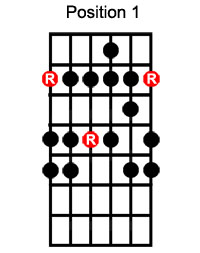
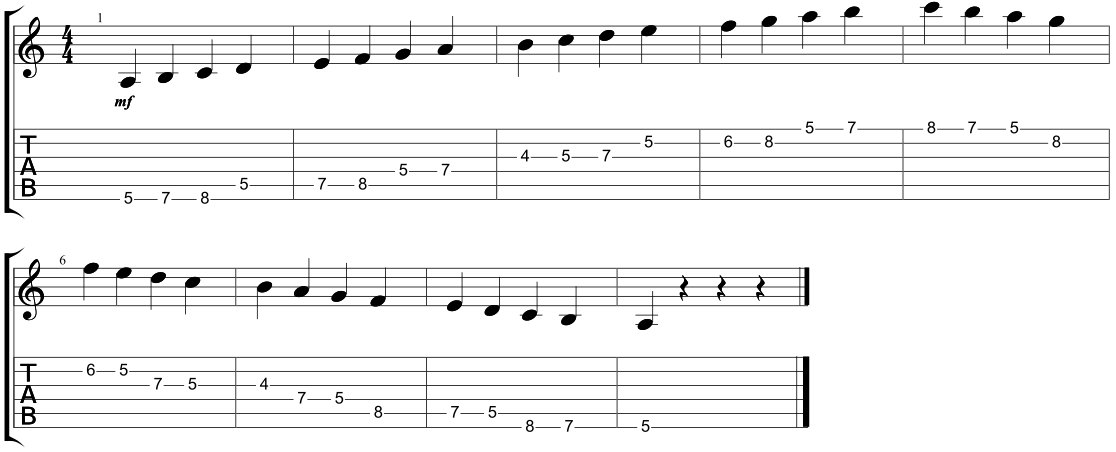
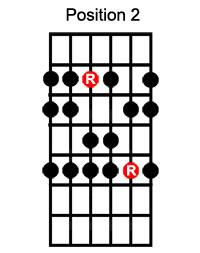
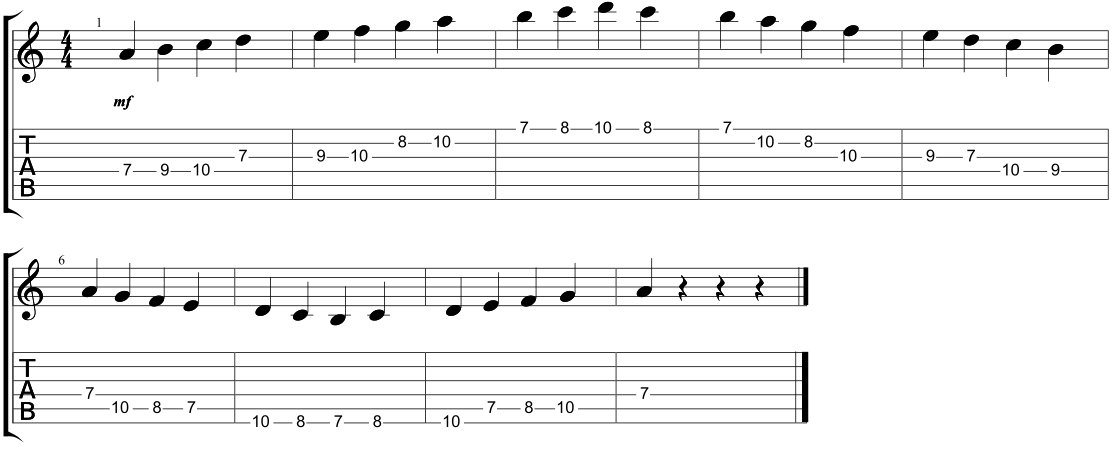
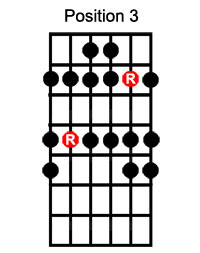
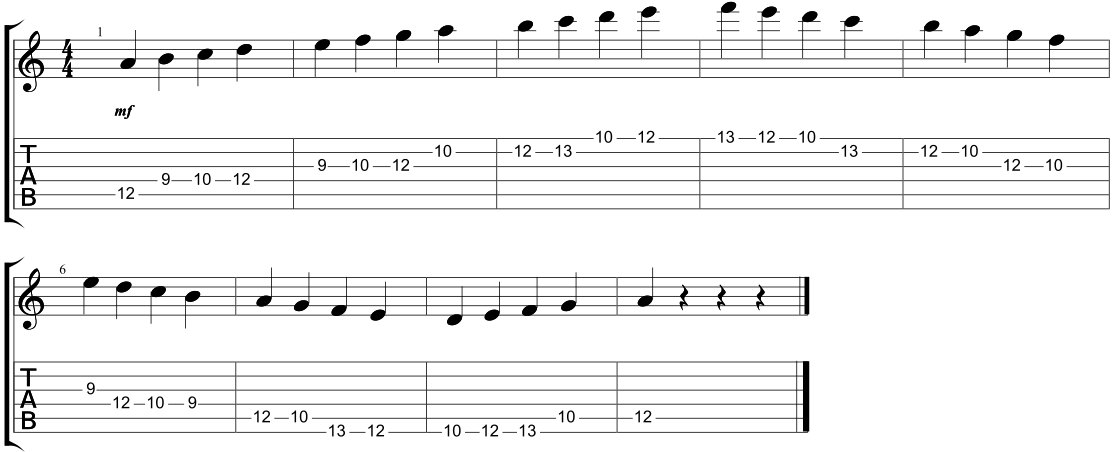
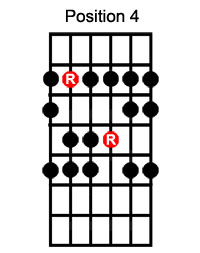

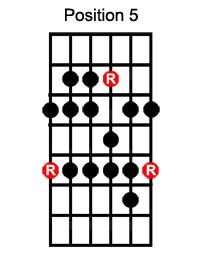
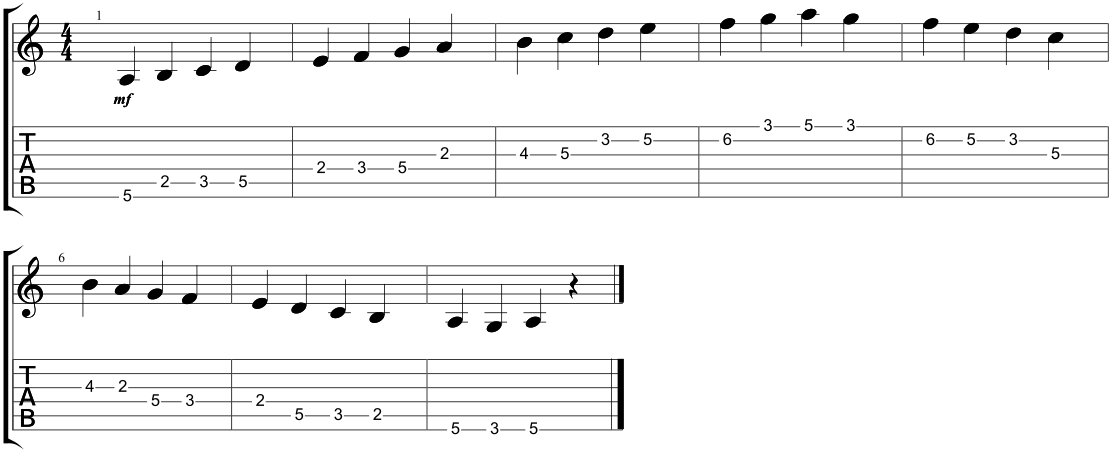
Hi Klaus sir,
I like to play natural minor scales.The tips you have provided are helpful.I am going to try these exercise.since it is also available in tabulature it is easier to play.I enjoy reading your post.Thanks for sharing.
I start to play the guitar, I visited some web sites, but yours is a very good site because you explain simplyand very specific; I am from Mexico and your site is helping me understand the guitar, thank you very much Klaus, blessings!
Hey great lesson as always, it would go really well with a minor scale sequences lesson. :-) take care
Hi Andrew,
Thanks for the tip. That’s a good idea for a post in the near future.
Best regards,
Klaus Crow
Why scale? Know the notes in the scale and play them everywhere on the neck, glide to every area of the neck. Throw in some half steps for the odd dissension.
hey, first thinks first I love your lessons and teachings…
now I noticed on box 2 the tab is completely wrong..in the box it starts on the 6th string ,7-8-10, 5th string the same…now on the tab it starts on the 5th string notes 7-9-10..theres nothing even written for the 6th sting..so yes iam confused here…thank you
they all seem to be like that, besides box one, maybe theres a theory behind this that im not seeing…anyone see what im talking about…
on the tab your leaving out the notes on the 6th and 5th strings..
it seems like on the tab your starting on the root note…all the best to you…
thanks for this now i will resite this i will never forget this:) :) :)
and i will complete all scale
Nice article. But your 5th shape is Mixolydian and that has always been referred to as a major mode of the major scale. Not a minor mode. ??
Isn’t it better to say 5 shapes or patterns? Using the word positions confuses players who know
the term positions to mean where on the fretboard you are playing…regardless of the shape and scale you are playing.
Hi John,
I agree.
I prefer shapes or patterns but there are a lot of guitar players who refer to it as positions.
I always use the word “shapes” as well to indicate a better word.
sir Thanks for the tip. That’s a good idea for a post in the near future.
Best regards,
suruj
I’m new to learning the minor scales, so bear with me. Why would you play those last two notes on the high E string in the first position? Wouldn’t you just play the scale starting from the root on the D string, and finish on the root on the high E string? Why are those two other notes included? Thank you.
Just stumbled on your site. Thanks for the exercise, I’ll be practicing this a lot.
I’d like to reply to Don Lessnau or others with the same question –
Don, that is indeed the Mixolydian shape. Specifically, it would be G Mixolydian, the fifth mode of C major. The relative minor of C major is A minor – that is, the relative minor has the same key signature (and thus the same notes) but a different tonic. So since this exercise uses A minor as an example, it will contain the same notes as C Ionian/G Mixolydian – A B C D E F G.